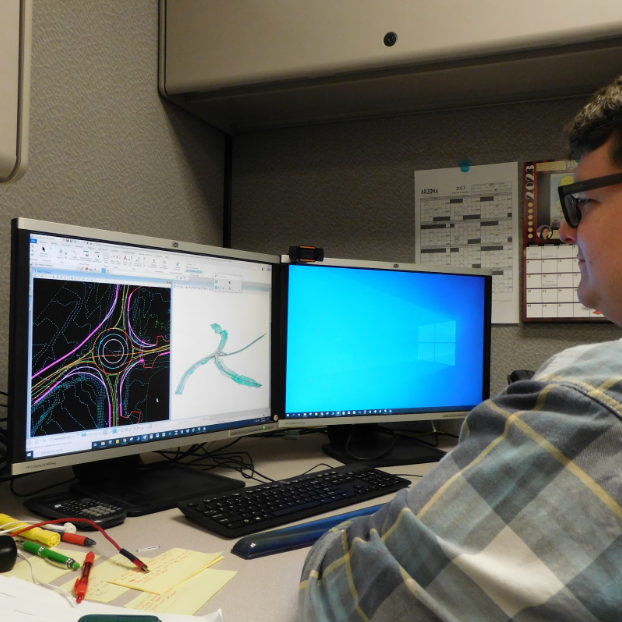CADD: It’s not a game
CADD: It’s not a game

At first glance, Computer-Aided Design and Drafting ‒ or CADD ‒ looks like a really cool video game: cool colors, neat graphics, and the ability to change just about anything at the push of a keyboard button. However, CADD is not a game for the engineers in ADOT’s Roadway Design Division. CADD is where all ADOT roads and structures, such as roundabouts, begin to take shape.
“If changes are needed, or alternatives need checking,” Roadway Design Manager Doug Smith said, “we can look at that as projects develop.”
Used at ADOT since 1987, also allows 3-D modeling of structures, such as bridges and freeway interchanges. This allows engineers to see what the highway will look like in the landscape.
Ken Brown, Transportation Engineering Specialist with ADOT’s Roadway Technical Support Section, says many other groups within Infrastructure Delivery and Operations (IDO) use CADD. Bridge Group, Roadway Group, Traffic Group, Right of Way Group, Utilities and Railroad Engineering, Districts, etc.
Once designs and plan sheets are made, developed and drafted they’re used in the office and the field. For example, Brown said, a CADD design can be loaded into the computer of construction equipment and programmed to work from the design. That saves time, as well as confusion, on job sites. In the office, teams check and double-check measurements and figures to make sure work conforms to national standards and the design needed.
CADD began life in 1957, when Dr. Patrick J. Hanratty developed PRONTO, the first commercial numerical-control programming system. Since then, the program has been through numerous refinements and standardization. Right now, Brown says, CADD training takes up to three weeks; engineers learn how to use the program, what can be done with it, and standards that are used and applied throughout the program.
Like all technology, CADD will continue to evolve. It’s come a long way since it was first used at ADOT in 1987 and improvements will benefit Arizona motorists.
“It’s a great design tool,” Smith said.
